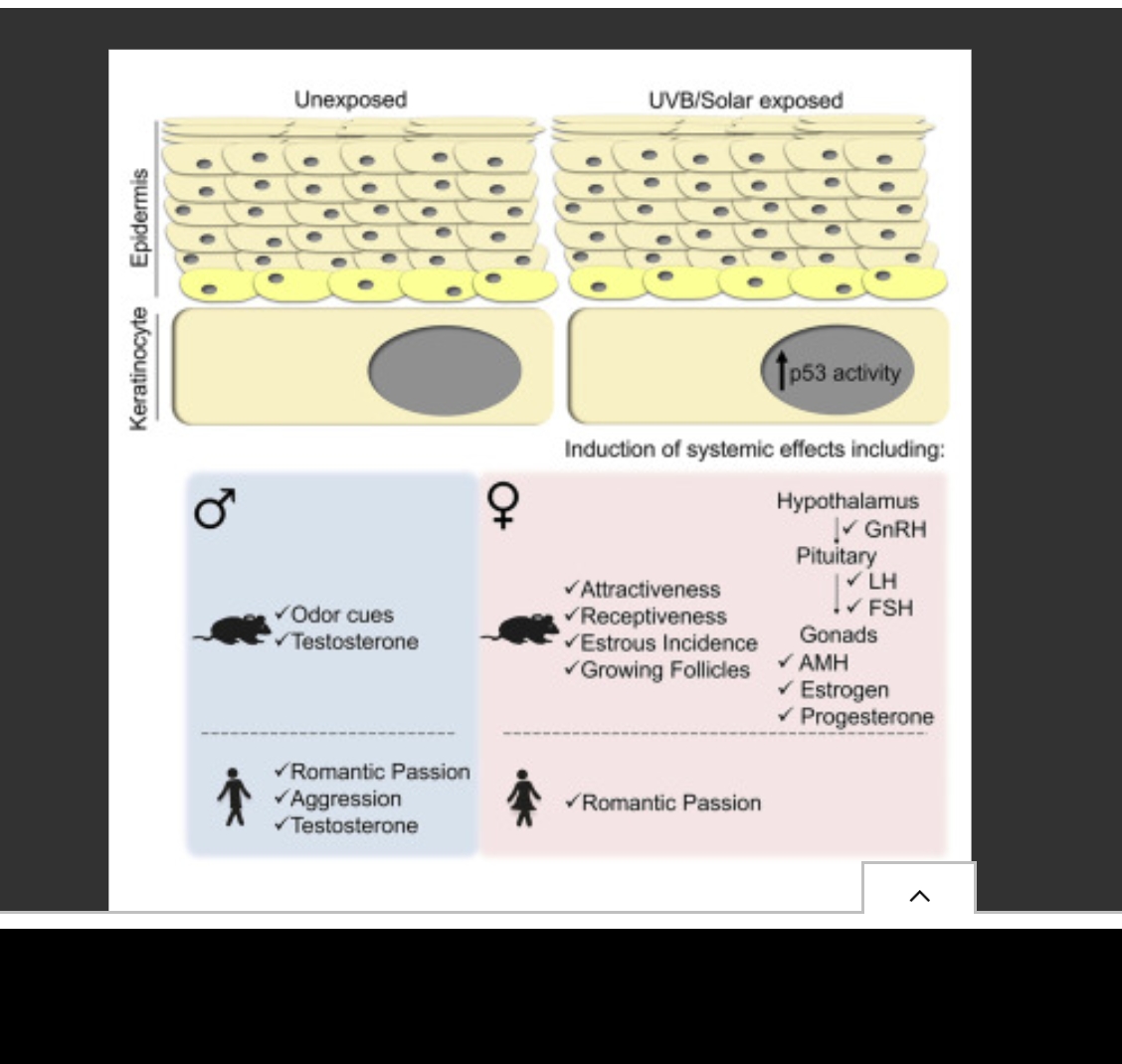Skin exposure to UVB light induces a skin-brain-gonad axis and sexual behavior
Roma Parikh Cell Rep 36, ISSUE 8, 109579, AUGUST 24, 2021
Highlights
• UVB exposure increases circulating sex-steroid levels in mice and humans
• UVB exposure enhances female attractiveness and receptiveness toward males
• UVB exposure increases females’ estrus phase, HPG axis hormones, and follicle growth
• Skin p53 regulates UVB-induced sexual behavior and ovarian physiological changes
Ultraviolet (UV) light affects endocrinological and behavioral aspects of sexuality via an unknown mechanism. Here we discover that ultraviolet B (UVB) exposure enhances the levels of sex-steroid hormones and sexual behavior, which are mediated by the skin. In female mice, UVB exposure increases hypothalamus-pituitary-gonadal axis hormone levels, resulting in larger ovaries; extends estrus days; and increases anti-Mullerian hormone (AMH) expression. UVB exposure also enhances the sexual responsiveness and attractiveness of females and male-female interactions. Conditional knockout of p53 specifically in skin keratinocytes abolishes the effects of UVB. Thus, UVB triggers a skin-brain-gonadal axis through skin p53 activation.
In humans, solar exposure enhances romantic passion in both genders and aggressiveness in men, as seen in analysis of individual questionaries, and positively correlates with testosterone level. Our findings suggest opportunities for treatment of sex-steroid-related dysfunctions.














